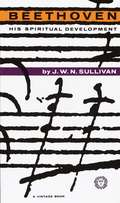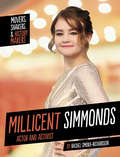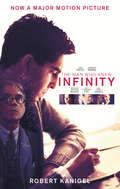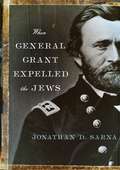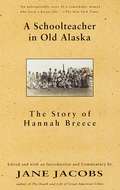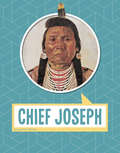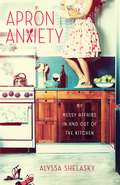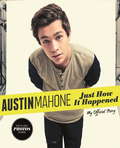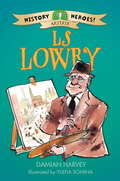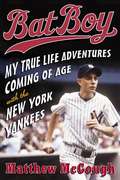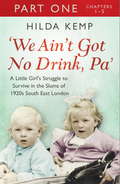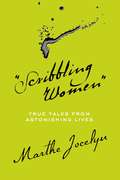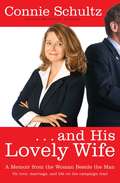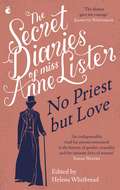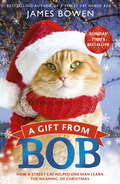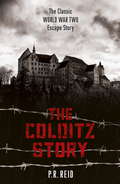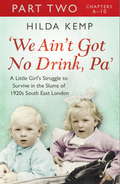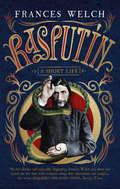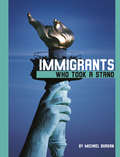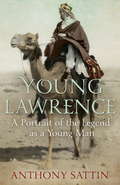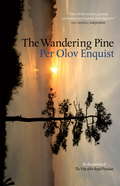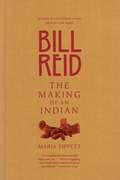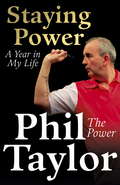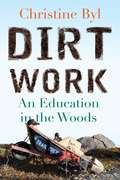- Table View
- List View
Beethoven: His Spiritual Development
by J. W. N. SullivanFrom the Author's Preface:"I believe that in his greatest music Beethoven was primarily concerned to express his personal vision of life. This vision was, of course, the product of his character and his experience. Beethoven the man and Beethoven the composer are not two unconnected entities, and the known history of the man may be used to throw light upon the character of his music." Clifton Fadiman has said of this classic study:"It is the most interesting book on music that I have ever read and it is not written for musical experts; rather for people like myself who like to listen to music but can boast no special knowledge of it. It deals not only with music, on which I do not speak with authority, but with human life in general, about which you and I speak with authority every day of our lives."
Millicent Simmonds: Actor and Activist (Movers, Shakers, and History Makers)
by Rachel Smoka-RichardsonDeaf actor Millicent Simmonds captivated audiences with her performances in Wonderstruck and A Quiet Place. She has appeared in music videos, TV episodes, and at awards shows that have brought awareness to how deaf people experience the world. Learn more about this talented young actor and how she intends to give deaf people the space to tell their own stories.
The Man Who Knew Infinity: A Life of the Genius Ramanujan
by Robert KanigelThe Man Who Knew Infinity is the true story of a friendship between Srinivasa Ramanujan and G.H. Hardy that forever changed mathematics. In 1913, a young unschooled Indian clerk wrote a letter to G H Hardy, begging the pre-eminent English mathematician's opinion on several ideas he had about numbers. Realising the letter was the work of a genius, Hardy arranged for Srinivasa Ramanujan to come to England. Thus began one of the most improbable and productive collaborations ever chronicled.With a passion for rich and evocative detail, Robert Kanigel takes us from the temples and slums of Madras to the courts and chapels of Cambridge University, where the devout Hindu Ramanujan, 'the Prince of Intuition,' tested his brilliant theories alongside the sophisticated and eccentric Hardy, 'the Apostle of Proof'. In time, Ramanujan's creative intensity took its toll: he died at the age of thirty-two and left behind a magical and inspired legacy that is still being plumbed for its secrets today.
When General Grant Expelled the Jews (Jewish Encounters Series)
by Jonathan D. SarnaFinalist, 2012 National Jewish Book AwardsA riveting account of General Ulysses S. Grant's decision, in the middle of the Civil War, to order the expulsion of all Jews from the territory under his command, and the reverberations of that decision on Grant's political career, on the nascent American Jewish community, and on the American political process. On December 17, 1862, just weeks before Abraham Lincoln announced the Emancipation Proclamation, General Grant issued what remains the most notorious anti-Jewish order by a government official in American history. His attempt to eliminate black marketeers by targeting for expulsion all Jews "as a class" unleashed a firestorm of controversy that made newspaper headlines and terrified and enraged the approximately 150,000 Jews then living in the United States, who feared the importation of European antisemitism onto American soil. Although the order was quickly rescinded by a horrified Abraham Lincoln, the scandal came back to haunt Grant when he ran for president in 1868. Never before had Jews become an issue in a presidential contest, and never before had they been confronted so publicly with the question of how to balance their "American" and "Jewish" interests. Award-winning historian Jonathan D. Sarna gives us the first complete account of this little-known episode--including Grant's subsequent apology, his groundbreaking appointment of Jews to prominent positions in his administration, and his unprecedented visit to the land of Israel. Sarna sheds new light on one of our most enigmatic presidents, on the Jews of his day, and on the ongoing debate between group loyalty and national loyalty that continues to roil American political and social discourse.JEWISH ENCOUNTERS SERIES From the Hardcover edition.
A Schoolteacher in Old Alaska: The Story of Hannah Breece
by Hannah BreeceWhen Hannah Breece came to Alaska in 1904, it was a remote lawless wilderness of prospectors, murderous bootleggers, tribal chiefs, and Russian priests. She spent fourteen years educating Athabascans, Aleuts, Inuits, and Russians with the stubborn generosity of a born teacher and the clarity of an original and independent mind. Jane Jacobs, Hannah's great-niece, here offers an historical context to Breece's remarkable eyewitness account, filling in the narrative gaps, but always allowing the original words to ring clearly. It is more than an adventure story: it is a powerful work of women's history that provides important--and, at times, unsettling--insights into the unexamined assumptions and attitudes that governed white settler's behavior toward native communities at the turn of the century. "An unforgettable...story of a remarkable woman who lived a heroic life."--The New York TimesFrom the Trade Paperback edition.
Chief Joseph (Biographies)
by Laura K. Murray Laura MurrayHow much do you know about Chief Joseph? Find out the facts you need to know about this leader of the Nez Perce people. You'll learn about the early life, challenges, and major accomplishments of this important American.
Apron Anxiety: My Messy Affairs In and Out of the Kitchen
by Alyssa Shelasky"Hot sex, looking good, scoring journalistic triumphs . . . nothing made Alyssa love herself enough until she learned to cook. There's a racy plot and a surprising moral in this intimate and delicious book." --Gael Greene, creator of Insatiable-Critic.com and author of Insatiable: Tales from a Life of Delicious ExcessApron Anxiety is the hilarious and heartfelt memoir of quintessential city girl Alyssa Shelasky and her crazy, complicated love affair with...the kitchen. Three months into a relationship with her TV-chef crush, celebrity journalist Alyssa Shelasky left her highly social life in New York City to live with him in D.C. But what followed was no fairy tale: Chef hours are tough on a relationship. Surrounded by foodies yet unable to make a cup of tea, she was displaced and discouraged. Motivated at first by self-preservation rather than culinary passion, Shelasky embarked on a journey to master the kitchen, and she created the blog Apron Anxiety (ApronAnxiety.com) to share her stories. This is a memoir (with recipes) about learning to cook, the ups and downs of love, and entering the world of food full throttle. Readers will delight in her infectious voice as she dishes on everything from the sexy chef scene to the unexpected inner calm of tying on an apron.From the Trade Paperback edition.
Just How It Happened
by Austin MahoneSee how Austin went from being a kid from a small town in Texas singing and messing around on YouTube with his friends to headlining his own shows around the world. Complete with exclusive photos and stories from his childhood as well as lots of behind-the-scenes fun, Austin's first official book will give you the glimpse into his life you can't get by following him on Twitter. Mahomies, this book is for you!
LS Lowry (History Heroes #8)
by Damian HarveyFollow the life of LS Lowry from his childhood industrial roots to becoming a modern day celebrity artist.Discover the stories of people who have helped to shape history, ranging from early explorers such as Christopher Columbus to more modern figures like Tim Berners-Lee, inventor of the World Wide Web.These chapter books combine historical fact with engaging narrative and humourous illustration, perfect for the newly independent reader.
Bat Boy: My True Life Adventures Coming of Age with the New York Yankees
by Matthew McgoughMost of us have dreamed of sitting in the dugout with our favorite baseball team, and at sixteen Matt McGough was no different. A few months after sending a blind application letter to George Steinbrenner, on Opening Day 1992 Matt found himself walking into the legendary Yankee clubhouse. There, amid the chaos and excitement, he was greeted by none other than his idol Don Mattingly — who promptly played a prank on him. Thus began two years of adventures and misadventures, from being set up on a date by the bullpen to playing blackjack on the team plane to studying for an exam at 3 am in Yankee Stadium. Through these often hilarious experiences, and especially through his friendships with the ballplayers, Matt learned priceless lessons about honor, responsibility, and the importance of believing in oneself. A magical tale of what happens to a young man when his fondest dream comes true,Bat Boywonderfully evokes that twilight time just before adulthood, ripe with possibility, foolishness, and hard-won knowledge.
'We Ain't Got No Drink, Pa': Part 1
by Hilda Kemp Cathryn KempWe Ain't Got No Drink, Pa can either be read as full-length eBook or in 3 serialised eBook-only parts.This is PART 1 OF 3.'We ain't got no drink, Pa.' I trembled as I spoke. Then somewhere inside me I found the anger, the courage to answer him back. 'We don't have no grog cos you drank it all!' I knew he was going for me tonight, so I reckoned I might as well go down fighting after all. Growing up in the slums of 1920s and 30s Bermondsey, Hilda Kemp's childhood was one of chaos and fear. Every day was battleground, a fight to survive and a fight to be safe. For Hilda knew what it was to grow up in desperate poverty: to have to scratch around for a penny to buy bread; to feel the seeping cold of a foggy docklands night with only a thin blanket to cover her; to share her filthy mattress with her brothers and sisters, fighting for space while huddling to keep warm. She knew what it was to feel hunger - not the impatient growl of a tummy that has missed a meal; proper hunger, the type that aches in your soul as much as your belly. The eldest of five children, Hilda was the daughter of a hard drinker and hard hitter as well. A casual dockworker by day, a bare-knuckle fighter by night and a lousy drunk to boot, her pa honed his fists down the Old Kent Road and Blackfriars, and it was Hilda or her ma who bore the brunt of them at home. This is the powerful and moving memoir of Hilda's childhood growing up in dark, filthy, crime-ridden Bermondsey; a place where you knew your neighbours, where you kept your eyes down and your ears shut as defence against the gangs at war in the streets. It's a time when days were spent running wild down the docklands, jumping onto barges and stealing coal, racing through the dank back-streets of east London like water rats, dodging the milk cart or the rag-and-bone man. And out of this bleak landscape emerges a brave, resilient young girl whose life is a testament to the power of love and good humour. Moving, dazzling and sombre by turns, once opened this brilliant, seductive book will not let you rest.
"Scribbling Women": True Tales from Astonishing Lives
by Marthe JocelynIn 1855, Nathaniel Hawthorne wrote to his publisher, complaining about the irritating fad of "scribbling women." Whether they were written by professionals, by women who simply wanted to connect with others, or by those who wanted to leave a record of their lives, those "scribbles" are fascinating, informative, and instructive.Margaret Catchpole was a transported prisoner whose eleven letters provide the earliest record of white settlement in Australia. Writing hundreds of years later, Aboriginal writer Doris Pilkington-Garimara wrote a novel about another kind of exile in Australia. Young Isabella Beeton, one of twenty-one children and herself the mother of four, managed to write a groundbreaking cookbook before she died at the age of twenty-eight. World traveler and journalist Nelly Bly used her writing to expose terrible injustices. Sei Shonagan has left us poetry and journal entries that provide a vivid look at the pampered life and intrigues in Japan's imperial court. Ada Blackjack, sole survivor of a disastrous scientific expedition in the Arctic, fought isolation and fear with her precious Eversharp pencil. Dr. Dang Thuy Tram's diary, written in a field hospital in the steaming North Vietnamese jungle while American bombs fell, is a heartbreaking record of fear and hope.Many of the women in "Scribbling Women" had eventful lives. They became friends with cannibals, delivered babies, stole horses, and sailed on whaling ships. Others lived quietly, close to home. But each of them has illuminated the world through her words.A note from the author: OOPS! On page 197, the credit for the Portrait of Harriet Jacobs on page 43 should read: courtesy of Library of Congress, not Jean Fagan Yellin. On page 197, the credit for the portrait of Isabella Beeton on page 61 should read: National Portrait Gallery, London. On page 198, the credit for page 147 should be Dang Kim Tram, not Kim Tram Dang. We are very sorry about the mix-up in the Photo Credits, they will be updated on any new editions or reprints.From the Hardcover edition.
. . . And His Lovely Wife: A Memoir from the Woman Beside the Man
by Connie SchultzWriting with warmth and humor, Connie Schultz reveals the rigors, joys, and absolute madness of a new marriage at midlife and campaigning with her husband, Sherrod Brown, now the junior senator from Ohio. She describes the chain of events leading up to Sherrod's decision to run for the Senate (he would not enter the fray without his wife's unequivocal support), and her own decision to step down from writing her Pulitzer Prize-winning column during the course of one of the nation's most intensely watched races. She writes about the moment her friends in the press became not so friendly, the constant campaign demands on her marriage and family life, and a personal tragedy that came out of the blue. Schultz also shares insight into the challenges of political life: dealing with audacious bloggers, ruthless adversaries, and political divas; battling expectations of a political wife; and the shock of having staffers young enough to be her children suddenly directing her every move. Connie Schultz is passionate and outspoken about her opinions-in other words, every political consultant's nightmare, and every reader's dream. "[Schultz is] a Pulitzer Prize--winning journalist with a mordant wit. . . . The [campaign memoir] genre takes on new life."-The Washington Post Book World"With her characteristic wit and reportorial thoroughness, [Schultz] describes the behind-the-scenes chaos, frustration and excitement of a political campaign and the impact it has on a candidate's family."-Minneapolis Star Tribune"Witty and anecdotal, whether read by a Democrat or a Republican."-Deseret Morning News"Frank and feisty . . . a spunky tribute to the survival of one woman's spirit under conditions in which it might have been squelched."-The Columbus DispatchFrom the Trade Paperback edition.
The Secret Diaries of Miss Anne Lister – Vol.2: The Secret Diaries of Miss Anne Lister, the Inspiration for Gentleman Jack (Virago Modern Classics #777)
by Anne Lister'The Lister diaries are the Dead Sea Scrolls of lesbian history; they changed everything. By resurrecting them and editing them with such loving attention and intelligence, Helena Whitbread has earned the gratitude of a whole generation' EMMA DONOGHUE'Engaging, revealing, at times simply astonishing: Anne Lister's diaries are an indispensable read' SARAH WATERSAnne Lister (1791-1840) was one of the most remarkable women of her time. Fearless and uncompromising, she wasdetermined to live life on her own terms, both financially and sexually. She wrote extensive diaries in 'crypthand', which allowed her to record her life in intimate, and sometimes explicit, detail. When they were decoded by Helena Whitbread, lesbian history was changed for ever. This is the second volume of her diaries.No Priest But Love begins in 1824. After an ill-fated love affair with a married woman, Anne Lister embarks on a journey alone to post-revolutionary Paris, a city alive with political intrigue. Here, she becomes romantically involved with a young widow, a relationship at odds with her social ambitions. Anne's efforts, firstly to extricate herself from this new 'scrape' and then to make a choice between the two women in her life, provides an absorbing sexual and social drama.'[Anne Lister's] sense of self, and self-awareness, is what makes her modern to us. She was a woman exercising conscious choice. She controlled her cash and her body. At a time when women had to marry, or be looked after by a male relative, and when all their property on marriage passed to their husband, Anne Lister not only dodged the traps of being female, she set up a liaison with another woman that enhanced her own wealth and left both of them free to live as they wished . . . The diaries gave me courage' JEANETTE WINTERSON
A Christmas Gift from Bob: NOW A MAJOR FILM
by James BowenThe festive standalone from James and Bob, the stars of the bestselling A Street Cat Named Bob. Now a major motion picture starring Luke Treadaway as James and Bob himself.STREET CAT BOB and James, stars of the bestselling A Street Cat Named Bob and The World According to Bob that touched millions of hearts around the world, return in a festive standalone special as they spend a cold and challenging December on the streets of London together in a new adventure.From the day James rescued a street cat abandoned in the hallway of his sheltered accommodation, they began a friendship which has transformed both their lives and, through the bestselling books A Street Cat Named Bob and The World According to Bob, touched millions around the world. In this new story of their journey together, James looks back at the last Christmas they spent scraping a living on the streets and how Bob helped him through one of his toughest times - providing strength, friendship and inspiration but also teaching him important lessons about the true meaning of Christmas along the way.Now a major motion picture starring Luke Treadaway as James and Bob himself, coming November 6.
The Colditz Story
by Major P ReidColditz was the last stop for prisoners of war during WWII. Those who persisted in escaping from other camps were sent to the impregnable fortress of Colditz Castle, situated on a rocky outcrop high above the River Mulde. Once within the walls of the castle, the Germans reasoned, escape was impossible. And yet many prisoners attempted escape and many succeeded Pat Reid was one of those men. Appointed 'Escape Officer' by his fellow inmates, he masterminded many of the attempts. From tunnelling, to hiding in rubbish sacks, disguising themselves as German officers and even leaping from the castle walls, nothing was too dangerous or foolhardy compared to imprisonment by the enemy. Reid's own escape, in 1942, was both one of the most simple and the most daring. First published in 1952, The Colditz Story is a classic escape story in the tradition of The Great Escape and The Wooden Horse.
'We Ain't Got No Drink, Pa': Part 2
by Hilda Kemp Cathryn KempWe Ain't Got No Drink, Pa can either be read as full-length eBook or in 3 serialised eBook-only parts.This is PART 2 OF 3.'We ain't got no drink, Pa.' I trembled as I spoke. Then somewhere inside me I found the anger, the courage to answer him back. 'We don't have no grog cos you drank it all!' I knew he was going for me tonight, so I reckoned I might as well go down fighting after all. Growing up in the slums of 1920s and 30s Bermondsey, Hilda Kemp's childhood was one of chaos and fear. Every day was battleground, a fight to survive and a fight to be safe. For Hilda knew what it was to grow up in desperate poverty: to have to scratch around for a penny to buy bread; to feel the seeping cold of a foggy docklands night with only a thin blanket to cover her; to share her filthy mattress with her brothers and sisters, fighting for space while huddling to keep warm. She knew what it was to feel hunger - not the impatient growl of a tummy that has missed a meal; proper hunger, the type that aches in your soul as much as your belly. The eldest of five children, Hilda was the daughter of a hard drinker and hard hitter as well. A casual dockworker by day, a bare-knuckle fighter by night and a lousy drunk to boot, her pa honed his fists down the Old Kent Road and Blackfriars, and it was Hilda or her ma who bore the brunt of them at home. This is the powerful and moving memoir of Hilda's childhood growing up in dark, filthy, crime-ridden Bermondsey; a place where you knew your neighbours, where you kept your eyes down and your ears shut as defence against the gangs at war in the streets. It's a time when days were spent running wild down the docklands, jumping onto barges and stealing coal, racing through the dank back-streets of east London like water rats, dodging the milk cart or the rag-and-bone man. And out of this bleak landscape emerges a brave, resilient young girl whose life is a testament to the power of love and good humour. Moving, dazzling and sombre by turns, once opened this brilliant, seductive book will not let you rest.
Rasputin: A short life
by Frances WelchGrigory Rasputin, the Siberian peasant-turned-mystic, was as fascinating as he was unfathomable. He played the role of the simple man, eating with his fingers and boasting, 'I don't even know my ABC...' But, as the only person able to relieve the symptoms of haemophilia in the Tsar's heir Alexis, he gained almost hallowed status within the Imperial court. During the last decade of his life, he and his band of 'little ladies' came to symbolise all that was decadent and remote about the royal family.His role in the downfall of the tsarist regime is beyond dispute. But who was he really? Prophet or rascal?In this eye-opening short biography, which draws on previously unpublished material, Frances Welch turns her inimitable wry gaze on one of the great mysteries of Russian history.
Immigrants Who Took a Stand (Immigrants Who Dared)
by Michael BurganSome of the most important changes in American culture have been driven by people born outside the United States. Immigrants may come as refugees, as workers, or as students. They may come as children or as adults. Once here, many speak out for the rights of others or try to build a better country by working within the government. Some give money to good causes. Others point out problems that need to be fixed. Still others create art and music that gives voice to the downtrodden. Here are 25 immigrants who have made a difference by taking a stand.
Young Lawrence: A Portrait of the Legend as a Young Man
by Anthony SattinT. E. Lawrence was one of the most charismatic characters of the First World War; a young archaeologist who fought with the Arabs and wrote an epic and very personal account of their revolt against the Turks in Seven Pillars of Wisdom. Yet this was not the first book to carry that iconic title. In 1914 the man who would become Lawrence of Arabia burnt the first Seven Pillars of Wisdom, a manuscript in which he described his adventures in the Middle East during the five years before the war. Anthony Sattin uncovers the story Lawrence wanted to conceal: the truth of his birth, his tortuous relationship with a dominant mother, his deep affection for an Arab boy, the intimate details of the extraordinary journeys he took through the region with which his name is forever connected and the personal reasons that drove him from being a student to becoming an archaeologist and a spy.Young Lawrence is the first book to focus on the story of T. E. Lawrence in his twenties, before the war, during the period he looked back on as his golden years. Using first-hand sources, museum records and Foreign Office documents, Sattin sets these adventures against the background of corrosive conflicts in Libya and the Balkans. He shows the simmering defiance of Arabs, Armenians and Kurds under Turkish domination, while uncovering the story of an exceptional young man searching for happiness, love and his place in the world until war changed his life forever.
The Wandering Pine: Life as a Novel
by Per Olov EnquistWhen everything began so well, how could it turn out so badly? A blisteringly frank autobiographical novel by Sweden's great man of letters - for readers of K. O. Knausgaard's My Struggle."Some life. Some novel . . . Wonderful, brave, evocative . . . It is a remarkable story, and Enquist is remarkably frank in narrating every last detail" HeraldWhat was it about Hjoggböle, a farming village in the northernmost part of Sweden, that created so many idiots - and writers? There was nothing to indicate that P.O. Enquist would be stricken by an addiction to writing. Nothing in his family - honest, hardworking people. Not a trace of poetry. And yet he worked his way, via journalism, novels and plays, to the centre of Swedish politics and cultural life. His books garnered prize after prize. His plays ran for decades and premiered on Broadway. Why then, living with a new wife in Paris, does he hole up in their palatial Champes-Élysées apartment, talking only to his cat? How is it that he wakes to find himself in an uncoupled carriage on a railway siding in Hamburg, two - or was it three? - days after the first-night party finished? And what is it that drives him to run shoeless through the deep January snow of an Icelandic plain, leaving the lights of the drying out clinic far behind? Narrating in the third person, as if he were merely a character in the eventful, perplexing and ultimately triumphantly redemptive drama of his own life, P.O. Enquist is as elliptical as Karl Ove Knausgaard is exhaustive. Clear-eyed, rueful, written with elegance and humour, this is the singular story of a remarkable man.
Bill Reid: The Making of an Indian
by Maria TippettPart biography, part art history -- a thoroughly engaging look at one man's life and his phenomenal influence on the world of contemporary art.Bill Reid was at the forefront of the modern-day renaissance of Northwest Coast Native art; but his art, and his life, was not without controversy. Like the raven -- the trickster and principal figure in countless Haida myths -- Bill Reid reinvented himself several times over. Born to a partly Haida mother and a father of German and Scottish descent, his public persona as a Haida Indian seems to have been as much a product of journalists, art patrons, museum curators and others in the non-Native establishment as of Bill Reid himself. It is clear that Reid's art arose from the tension that existed between his Native and white artistic perceptions.Award-winning biographer and cultural historian Maria Tippett became intrigued by this enigmatic figure who referred to his own early works as "artefakes," yet to this day continues to inspire new generations of Northwest Coast artists, including Robert Davidson and Jim Hart. But she questions whether Reid's status as the architect of contemporary Native art is fair and accurate, given that artists such as Mungo Martin had been keeping the tradition alive since the beginning of the twentieth century. Most controversially, she explores how Reid brought a sensibility formed through his white heritage to the reinvention of Native art.By asking difficult questions about Reid's life and work, and by analyzing the works of other Native artists since the beginning of the twentieth century, Tippet gives the reader the defining portrait of Bill Reid -- one of Canada's most enigmatic and beloved artists. Bill Reid's work can be found in private and public art galleries and museums all over the world. The Museum of Anthropology at the University of British Columbia houses the famous The Raven and The First Men and many smaller masterworks. The Spirit of Haida Gwaii, a monumental bronze sculpture over four metres high, is on display at the Canadian Embassy in Washington, D.C. The British Museum, the Musée de l'Homme in Paris and the Canadian Museum of Civilization in Ottawa also hold impressive examples of the work of this extraordinary and imaginative artist.
Staying Power: A Year In My Life
by Phil TaylorPhil 'The Power' Taylor is the uncontested king of darts, his sixteen world championship titles between 1990 and 2013 far outclassing anything else the game has seen.He started out as a protégé of Eric Bristow, the Crafty Cockney, having wandered into his Burslem pub with a set of darts his wife had given him for his birthday. At that time Taylor was earning £52 a week working in a ceramics factory and hardly played. But jaws dropped and pint mugs tipped over as this newcomer suddenly unleashed a gift for flight that had soon eclipsed even the Crafty Cockney himself, and amassed Phil a haul of over 200 professional tournament victories.Staying Power is a year in the life of a legend, twice nominated for BBC Sports Personality of the Year, a man who made darts look a doddle to British pub-goers everywhere and set his seal on the game as the bloke to beat. A year of triumph and disaster, in which Taylor crashed out of the world championship in the second round to young outsider Michael Smith and fell asleep at home on Christmas day, exhausted from the strain of constant winning. A year when he played arguably the greatest ever game of darts, in the Grand Slam semi-final against recent world champion Adrian Lewis the two slugging it out to the wire. A year in which Taylor rocked Australia, fêted like royalty. A year of spats and hecklers, clashes on stage and off, of head-to-heads with the Dutch superstar Michael van Gerwen.But most of all this is a year in which Phil Taylor, one of sport's greatest champions, has looked hard at his life in his determination to stay in power.
Dirt Work: An Education in the Woods
by Christine BylA lively and lyrical account of one woman's unlikely apprenticeship on a national-park trail crew and what she discovers about nature, gender, and the value of hard work Christine Byl first encountered the national parks the way most of us do: on vacation. But after she graduated from college, broke and ready for a new challenge, she joined a Glacier National Park trail crew as a seasonal "traildog" maintaining mountain trails for the millions of visitors Glacier draws every year. Byl first thought of the job as a paycheck, a summer diversion, a welcome break from "the real world" before going on to graduate school. She came to find out that work in the woods on a trail crew was more demanding, more rewarding--more real--than she ever imagined. During her first season, Byl embraces the backbreaking difficulty of the work, learning how to clear trees, move boulders, and build stairs in the backcountry. Her first mentors are the colorful characters with whom she works--the packers, sawyers, and traildogs from all walks of life--along with the tools in her hands: axe, shovel, chainsaw, rock bar. As she invests herself deeply in new work, the mountains, rivers, animals, and weather become teachers as well. While Byl expected that her tenure at the parks would be temporary, she ends up turning this summer gig into a decades-long job, moving from Montana to Alaska, breaking expectations--including her own--that she would follow a "professional" career path. Returning season after season, she eventually leads her own crews, mentoring other trail dogs along the way. In Dirt Work, Byl probes common assumptions about the division between mental and physical labor, "women's work" and "men's work," white collars and blue collars. The supposedly simple work of digging holes, dropping trees, and blasting snowdrifts in fact offers her an education of the hands and the head, as well as membership in an utterly unique subculture. Dirt Work is a contemplative but unsentimental look at the pleasures of labor, the challenges of apprenticeship, and the way a place becomes a home.
Conversations with Frank Gehry
by Barbara IsenbergAn unprecedented, intimate, and richly illustrated portrait of Frank Gehry, one of the world's most influential architects. Drawing on the most candid, revealing, and entertaining conversations she has had with Gehry over the last twenty years, Barbara Isenberg provides new and fascinating insights into the man and his work.Gehry's subjects range from his childhood--when he first built cities with wooden blocks on the floor of his grandmother's kitchen--to his relationships with clients and his definition of a "great" client. We learn about his architectural influences (including Le Corbusier and Frank Lloyd Wright) and what he has learned from Michelangelo, Rembrandt, and Rauschenberg.We explore the thinking behind his designs for the Guggenheim Bilbao and the Walt Disney Concert Hall, the redevelopment of Atlantic Yards in Brooklyn and Grand Avenue in Los Angeles, the Gehry Collection at Tiffany's, and ongoing projects in Toronto, Paris, Abu Dhabi, and elsewhere. And we follow as Gehry illuminates the creative process by which his ideas first take shape--for example, through early drawings for the Guggenheim Museum in Bilbao, when the building's trademark undulating curves were mere scribbles on a page. Sketches, models, and computer images provided by Gehry himself allow us to see how so many of his landmark buildings have come to fruition, step by step.Conversations with Frank Gehry is essential reading for everyone interested in the art and craft of architecture, and for everyone fascinated by the most iconic buildings of our time, as well as the man and the mind behind them.From the Hardcover edition.
